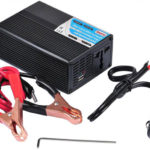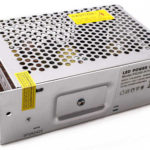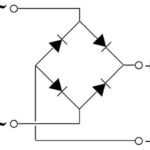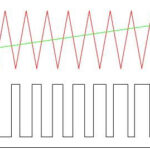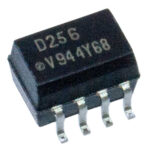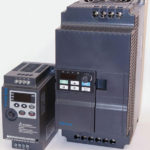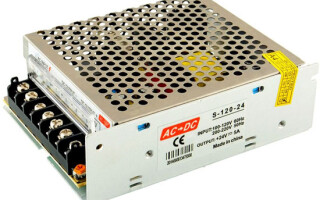The switching power supply is used to convert the input voltage to the value required by the internal elements of the device. Another name for pulsed sources, which has become widespread, is inverters.
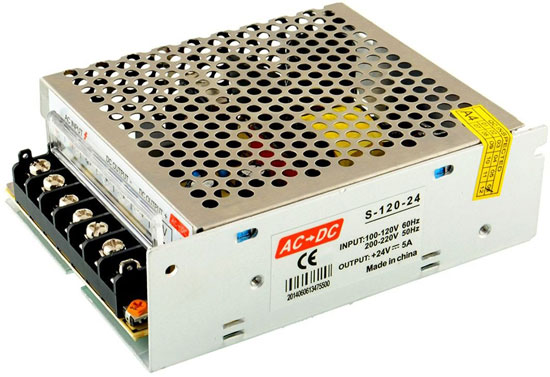
Content
What it is?
The inverter is a secondary power supply that uses double conversion of the input AC voltage. The value of the output parameters is regulated by changing the duration (width) of the pulses and, in some cases, the frequency of their repetition. This type of modulation is called pulse width modulation.
The principle of operation of a switching power supply
The operation of the inverter is based on the rectification of the primary voltage and its further transformation into a sequence of high-frequency pulses. In this it differs from a conventional transformer.The output voltage of the block is used to form a negative feedback signal, which allows you to adjust the parameters of the pulses. By controlling the width of the pulses, it is easy to organize the stabilization and adjustment of output parameters, voltage or current. That is, it can be both a voltage stabilizer and a current stabilizer.
The number and polarity of the output values can be very different depending on how the switching power supply works.
Varieties of power supplies
Several types of inverters have been used, which differ in their construction scheme:
- transformerless;
- transformer.
The first ones differ in that the pulse sequence goes directly to the output rectifier and the smoothing filter of the device. Such a scheme has a minimum of components. A simple inverter includes a specialized integrated circuit - a pulse-width generator.
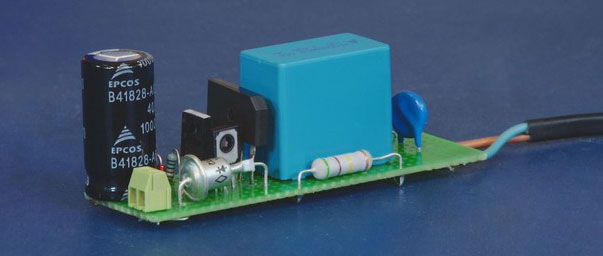
Of the disadvantages of transformerless devices, the main one is that they do not have galvanic isolation from the mains and can pose a risk of electric shock. Also, they usually have a small power and give only 1 value of the output voltage.
More common are transformer devices in which a high-frequency pulse train is fed to the primary winding of the transformer. There can be as many secondary windings as you like, which allows you to generate several output voltages. Each secondary winding is loaded with its own rectifier and smoothing filter.
A powerful switching power supply for any computer is built according to a scheme that has high reliability and safety. For the feedback signal, a voltage of 5 or 12 volts is used here, since these values require the most accurate stabilization.
The use of transformers for converting high-frequency voltage (tens of kilohertz instead of 50 Hz) made it possible to reduce their dimensions and weight many times over and to use not electrical iron, but ferromagnetic materials with high coercive force as the core material (magnetic circuit).
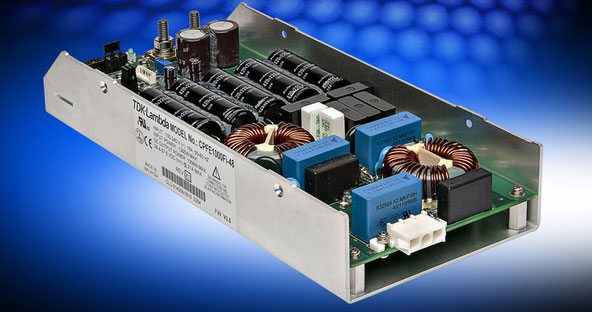
DC converters are also built on the basis of pulse-width modulation. Without the use of inverter circuits, the conversion was associated with great difficulties.
PSU scheme
The circuit of the most common configuration of a pulse converter includes:
- network noise suppression filter;
- rectifier;
- smoothing filter;
- pulse-width converter;
- key transistors;
- output high-frequency transformer;
- output rectifiers;
- output individual and group filters.
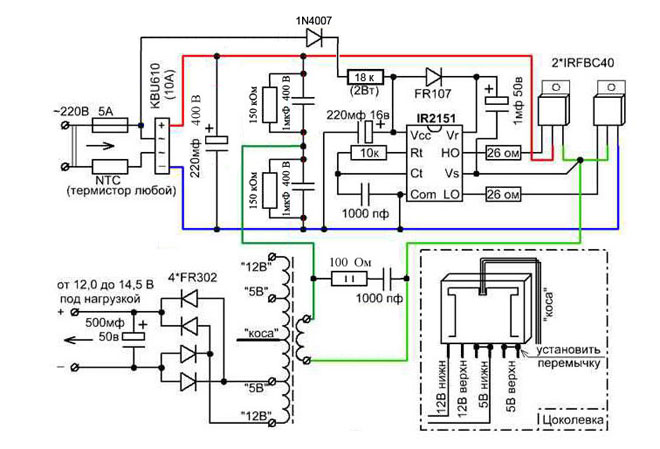
The purpose of the noise suppression filter is to delay interference from the operation of the device into the mains. Switching power semiconductor elements can be accompanied by the creation of short-term pulses in a wide frequency range. Therefore, here it is necessary to use elements specially designed for this purpose as feed-through capacitors of the filtering units.
The rectifier is used to convert the input AC voltage to DC, and the next smoothing filter eliminates the ripple of the rectified voltage.
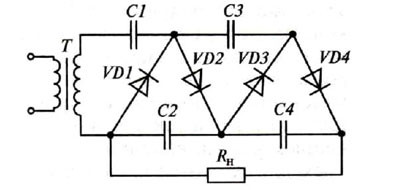
In the case when a DC/DC converter is used, the rectifier and filter become unnecessary, and the input signal, having passed the noise filter circuits, is fed directly to the pulse-width converter (modulator), abbreviated as PWM.
PWM is the most complex part of the switching power supply circuit. Its task includes:
- generation of high-frequency pulses;
- control of the output parameters of the block and correction of the pulse sequence in accordance with the feedback signal;
- control and overload protection.
The PWM signal is fed to the control outputs of powerful key transistors connected in a bridge or half-bridge circuit. The power outputs of the transistors are loaded on the primary winding of the high-frequency output transformer. Instead of traditional bipolar transistors, IGBT or MOSFET transistors are used, which are characterized by low voltage drop across the junctions and high speed. Improved transistor parameters help to reduce power dissipation with the same dimensions and technical design parameters.
The output pulse transformer uses the same conversion principle as the classical one. An exception is work at a higher frequency. As a result, high-frequency transformers with the same transmitted power have smaller dimensions.
The voltage from the secondary winding of the power transformer (there may be several) is supplied to the output rectifiers. Unlike the input rectifier, the rectifier diodes of the secondary circuit must have an increased operating frequency.Schottky diodes work best in this section of the circuit. Their advantages over conventional ones:
- high operating frequency;
- reduced capacitance p-n junction;
- small voltage drop.
The purpose of the output filter of the switching power supply is to reduce the ripple of the rectified output voltage to the required minimum. Since the ripple frequency is much higher than that of the mains voltage, there is no need for large capacitance values of the capacitors and inductance of the coils.
Scope of switching power supply
Switching voltage converters are used in most cases instead of traditional transformers with semiconductor stabilizers. With the same power, the inverters are smaller overall dimensions and weight, high reliability, and most importantly - higher efficiency and the ability to operate in a wide input voltage range. And with comparable dimensions, the maximum inverter power is several times higher.
In such an area as direct voltage conversion, pulsed sources have practically no alternative replacement and are able to work not only to lower the voltage, but also to generate an increased one, to organize a polarity change. The high conversion frequency greatly facilitates the filtering and stabilization of the output parameters.
Small-sized inverters based on specialized integrated circuits are used as chargers for all kinds of gadgets, and their reliability is such that the service life of the charging unit can exceed the operating time of a mobile device by several times.
12 Volt power drivers for turning on LED lighting sources are also built according to a pulsed circuit.
How to make a switching power supply with your own hands
Inverters, especially powerful ones, have complex circuitry and are available for repetition only by experienced radio amateurs. For self-assembly of network power supplies, we can recommend simple low-power circuits using specialized PWM controller chips. Such ICs have a small number of strapping elements and have proven typical switching circuits that practically do not require adjustment and tuning.
When working with home-made structures or repairing industrial devices, it must be remembered that part of the circuit will always be at the potential of the network, therefore, safety measures must be observed.
Similar articles:
